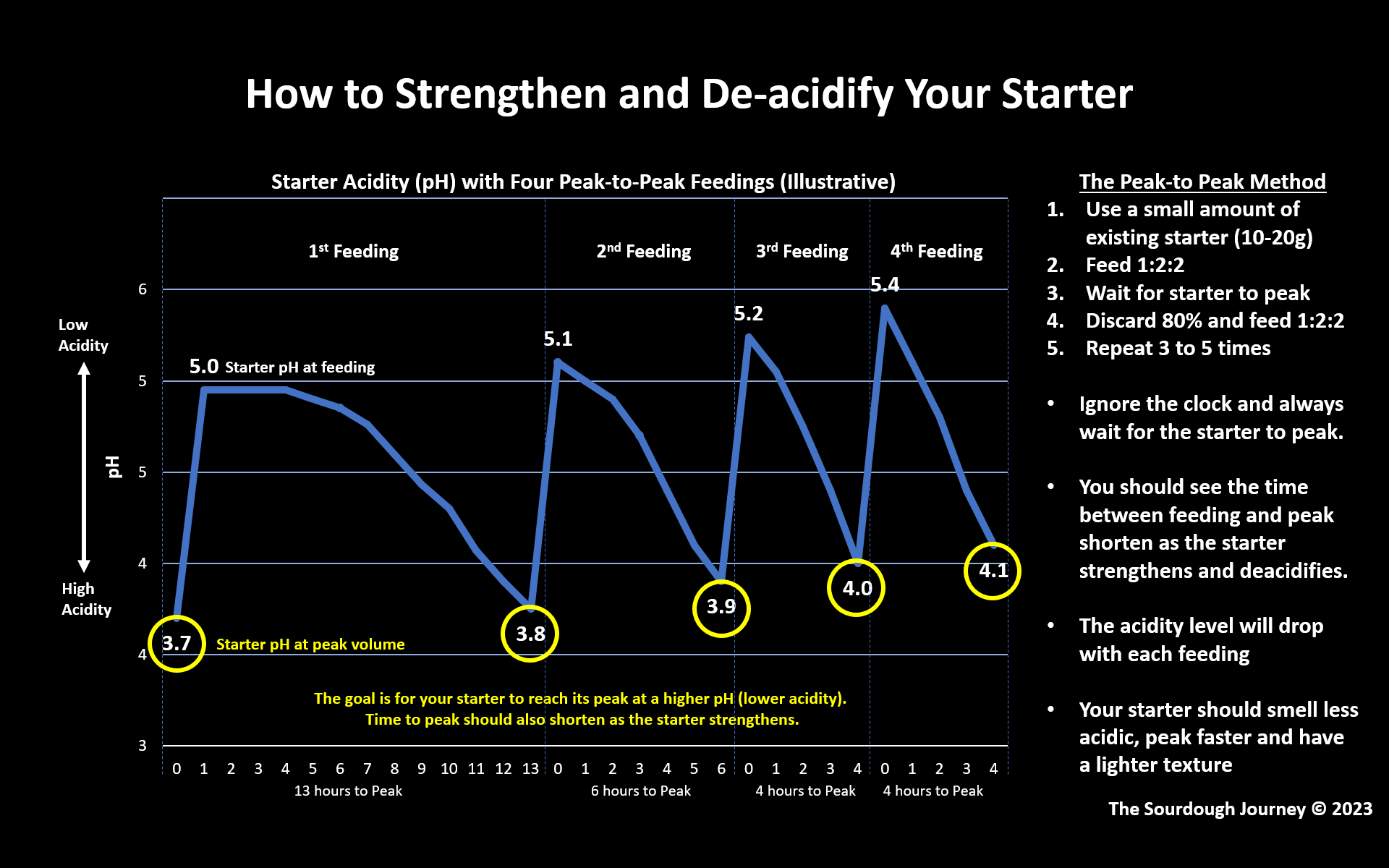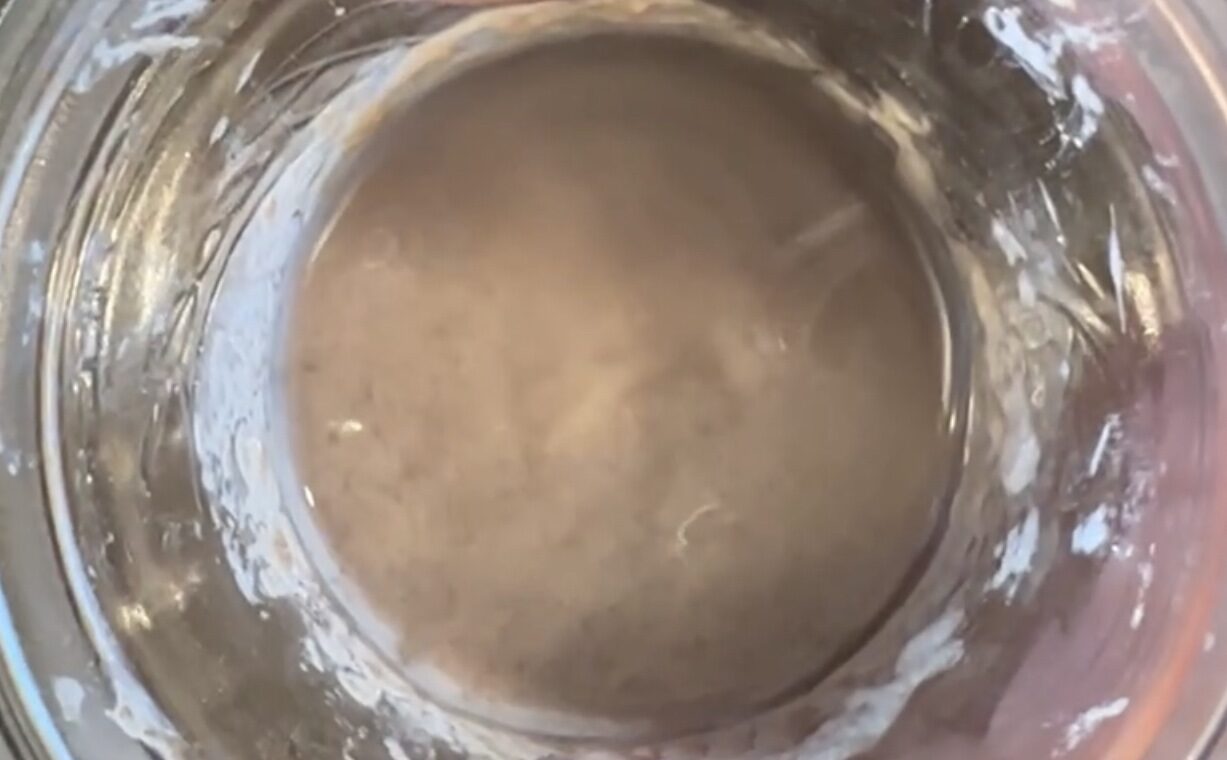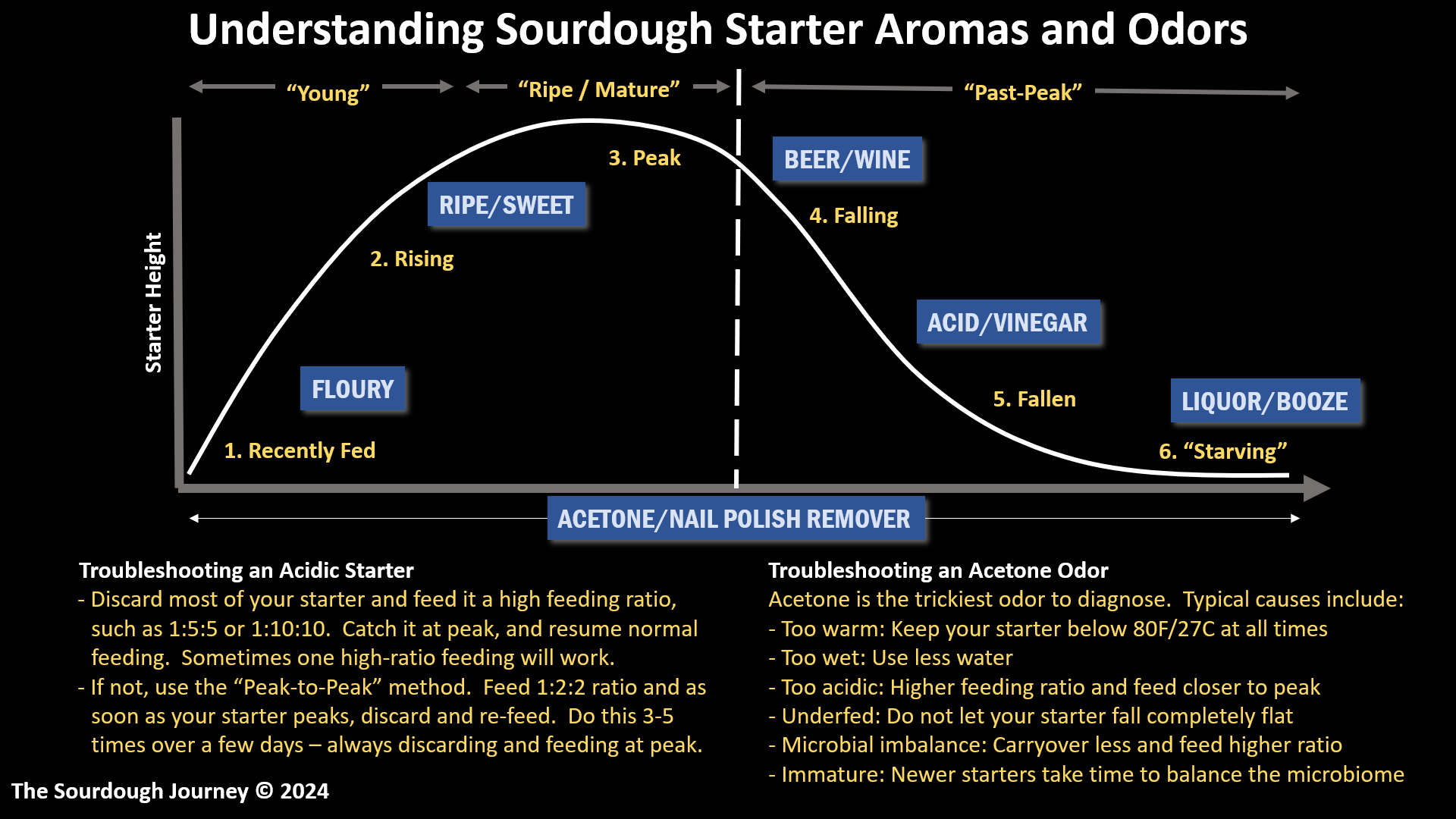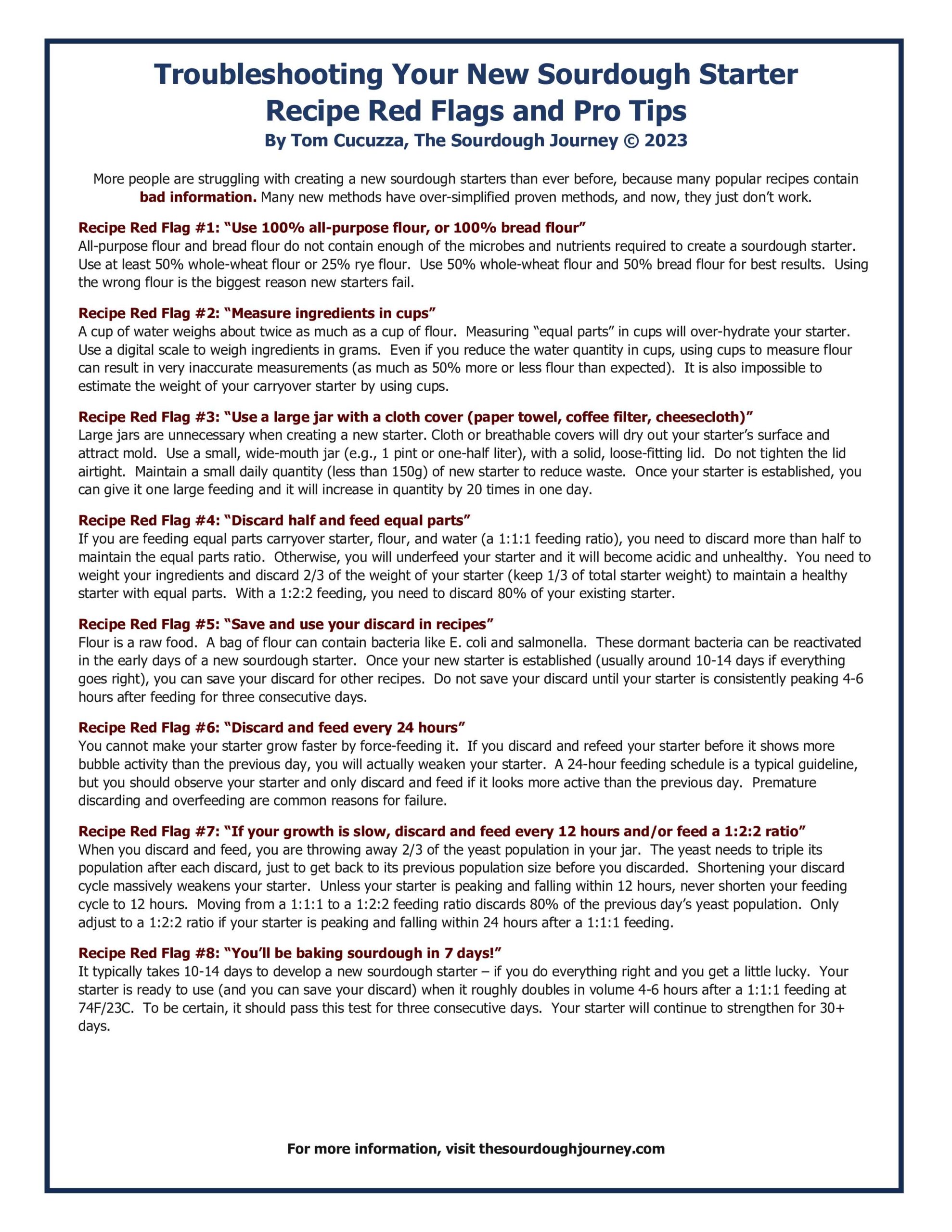Troubleshooting Your New Sourdough Starter
Recipe Red Flags and Pro Tips
By Tom Cucuzza, The Sourdough Journey © 2023
More people are struggling with creating a new sourdough starters than ever before, because many popular recipes contain bad information. Many new methods have over-simplified proven methods, and now, they just don’t work.
Recipe Red Flag #1: “Use 100% all-purpose flour, or 100% bread flour”
All-purpose flour and bread flour do not contain enough of the microbes and nutrients required to create a sourdough starter. Use at least 50% whole-wheat flour or 25% rye flour. Use 50% whole-wheat flour and 50% bread flour for best results. Using the wrong flour is the biggest reason new starters fail.
Recipe Red Flag #2: “Measure ingredients in cups”
A cup of water weighs about twice as much as a cup of flour. Measuring “equal parts” in cups will over-hydrate your starter. Use a digital scale to weigh ingredients in grams. Even if you reduce the water quantity in cups, using cups to measure flour can result in very inaccurate measurements (as much as 50% more or less flour than expected). It is also impossible to estimate the weight of your carryover starter by using cups.
Recipe Red Flag #3: “Use a large jar with a cloth cover (paper towel, coffee filter, cheesecloth)”
Large jars are unnecessary when creating a new starter. Cloth or breathable covers will dry out your starter’s surface and attract mold. Use a small, wide-mouth jar (e.g., 1 pint or one-half liter), with a solid, loose-fitting lid. Do not tighten the lid airtight. Maintain a small daily quantity (less than 150g) of new starter to reduce waste. Once your starter is established, you can give it one large feeding and it will increase in quantity by 20 times in one day.
Recipe Red Flag #4: “Discard half and feed equal parts”
If you are feeding equal parts carryover starter, flour, and water (a 1:1:1 feeding ratio), you need to discard more than half to maintain the equal parts ratio. Otherwise, you will underfeed your starter and it will become acidic and unhealthy. You need to weight your ingredients and discard 2/3 of the weight of your starter (keep 1/3 of total starter weight) to maintain a healthy starter with equal parts. With a 1:2:2 feeding, you need to discard 80% of your existing starter.
Recipe Red Flag #5: “Save and use your discard in recipes”
Flour is a raw food. A bag of flour can contain bacteria like E. coli and salmonella. These dormant bacteria can be reactivated in the early days of a new sourdough starter. Once your new starter is established (usually around 10-14 days if everything goes right), you can save your discard for other recipes. Do not save your discard until your starter is consistently peaking 4-6 hours after feeding for three consecutive days.
Recipe Red Flag #6: “Discard and feed every 24 hours”
You cannot make your starter grow faster by force-feeding it. If you discard and refeed your starter before it shows more bubble activity than the previous day, you will actually weaken your starter. A 24-hour feeding schedule is a typical guideline, but you should observe your starter and only discard and feed if it looks more active than the previous day. Premature discarding and overfeeding are common reasons for failure.
Recipe Red Flag #7: “If your growth is slow, discard and feed every 12 hours and/or feed a 1:2:2 ratio”
When you discard and feed, you are throwing away 2/3 of the yeast population in your jar. The yeast needs to triple its population after each discard, just to get back to its previous population size before you discarded. Shortening your discard cycle massively weakens your starter. Unless your starter is peaking and falling within 12 hours, never shorten your feeding cycle to 12 hours. Moving from a 1:1:1 to a 1:2:2 feeding ratio discards 80% of the previous day’s yeast population. Only adjust to a 1:2:2 ratio if your starter is peaking and falling within 24 hours after a 1:1:1 feeding.
Recipe Red Flag #8: “You’ll be baking sourdough in 7 days!”
It typically takes 10-14 days to develop a new sourdough starter – if you do everything right and you get a little lucky. Your starter is ready to use (and you can save your discard) when it roughly doubles in volume 4-6 hours after a 1:1:1 feeding at 74F/23C. To be certain, it should pass this test for three consecutive days. Your starter will continue to strengthen for 30+ days.
Tom Cucuzza
Share:
Related Posts

Dough Temping for PERFECT Sourdough Fermentation
What is sourdough “dough temping,” and how does it work?

The Science of the Peak-to-Peak Method of Strengthening a Sourdough Starter
What is the Peak-to-Peak Method and how does it strengthen a weak sourdough starter?

How to Strengthen a Weak, Acidic Starter
Is your sourdough starter sluggish? How do you identify and fix a weak, acidic starter. This document is the companion guide to the popular video “How to Strengthen a Weak, Acidic Starter.”

My Sourdough Starter Smells Like Acetone
My sourdough starter smells like acetone?

Troubleshooting Your New Sourdough Starter: Recipe Red Flags and Pro Tips
What’s wrong with my new sourdough starter?
